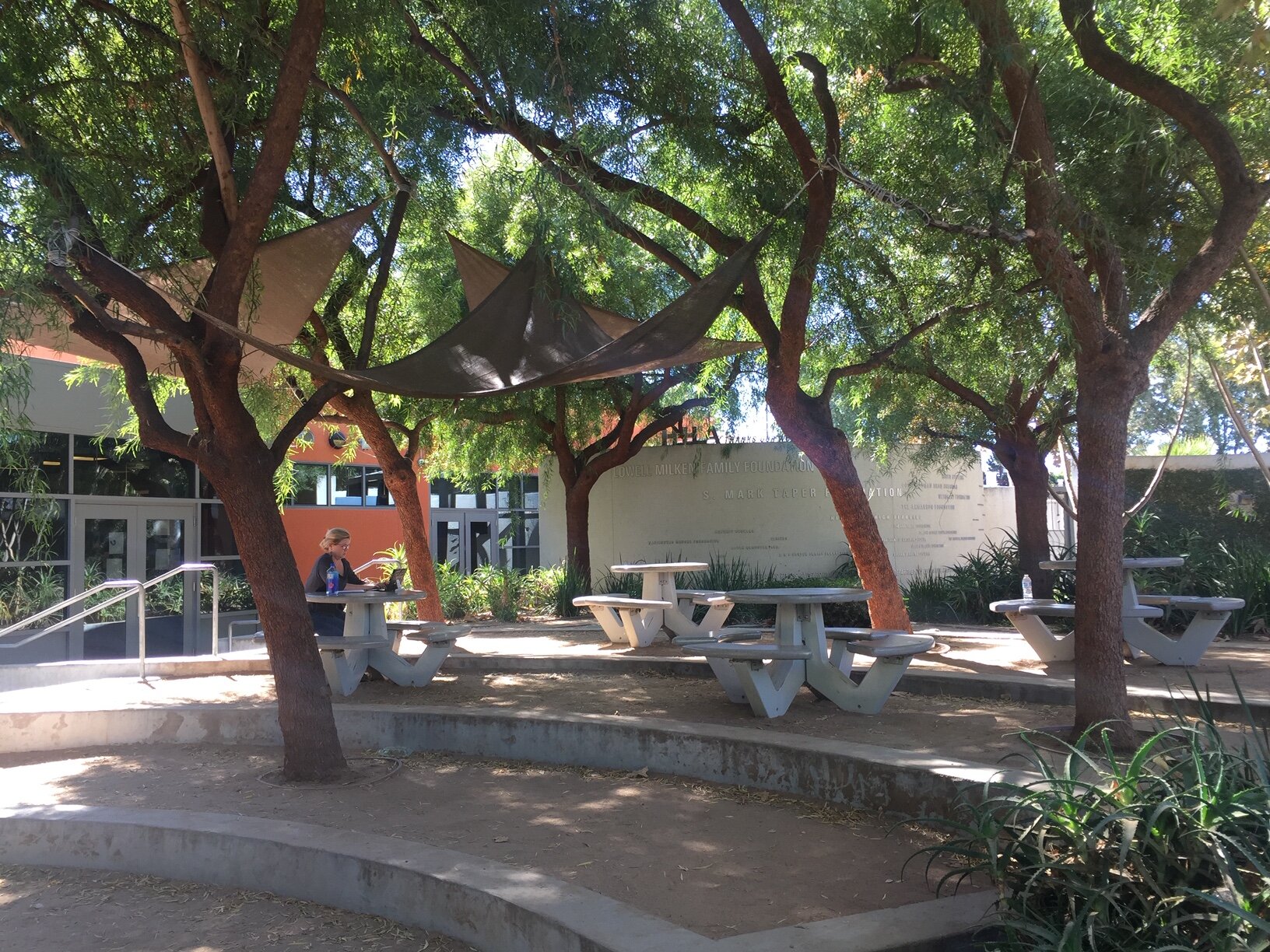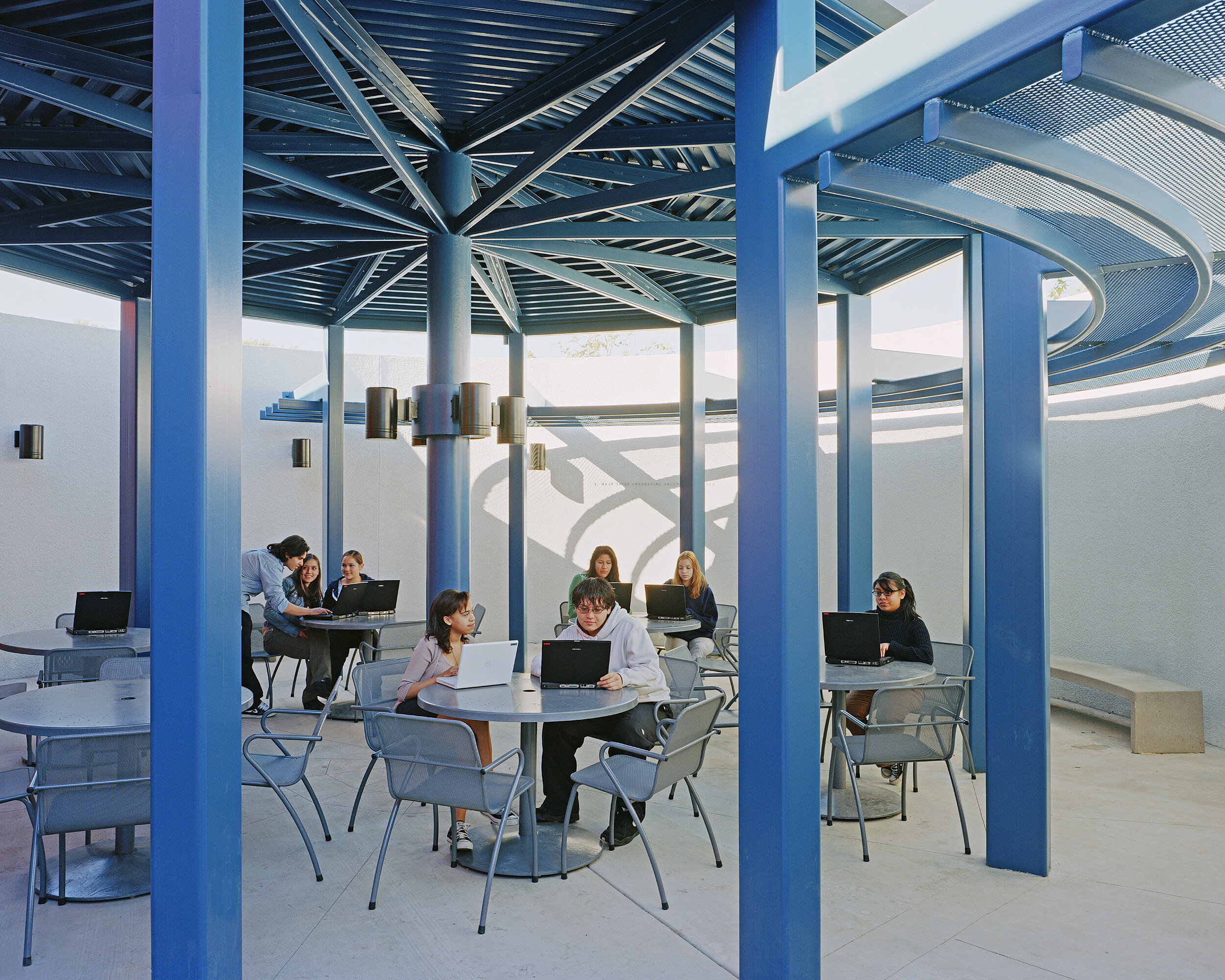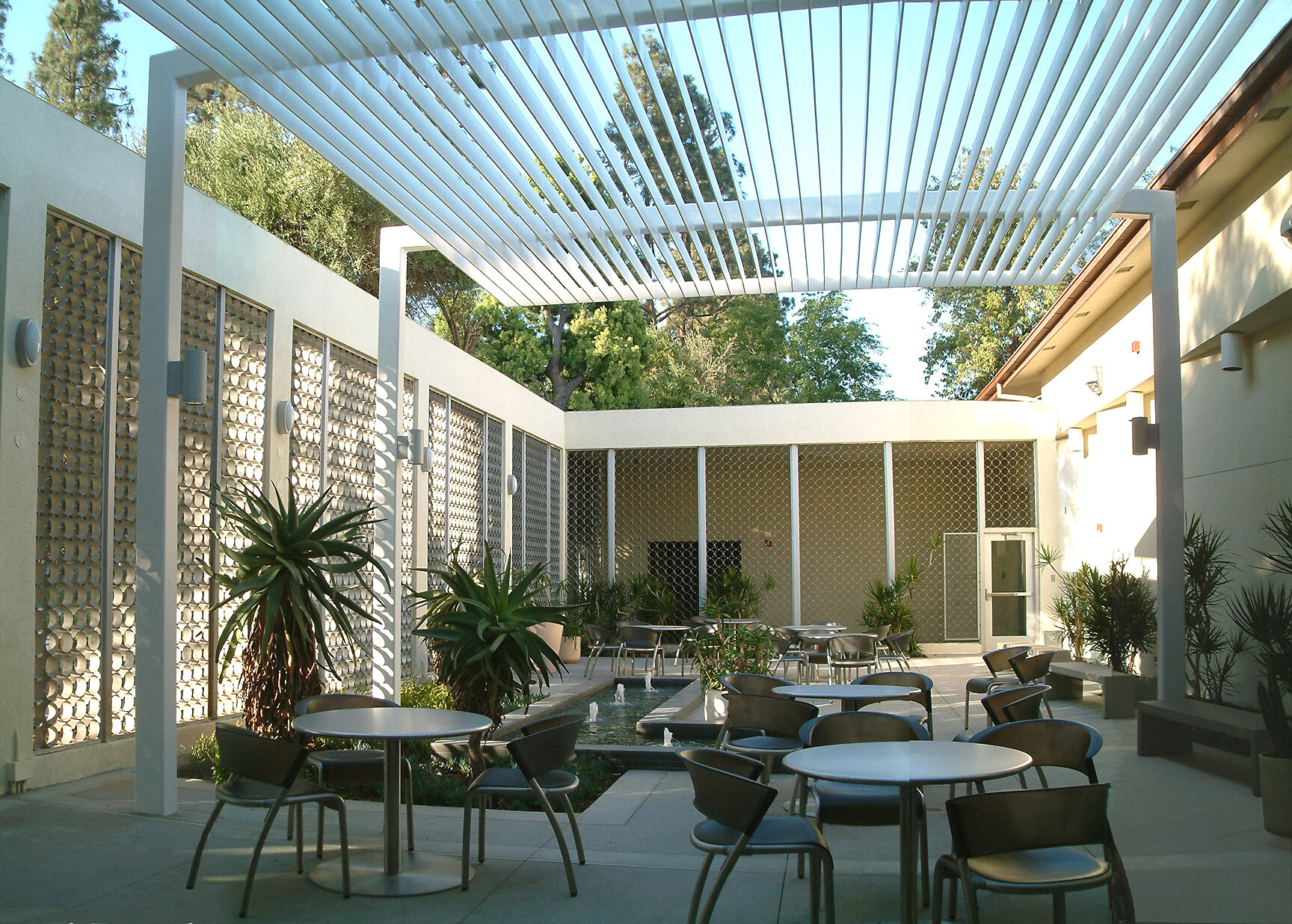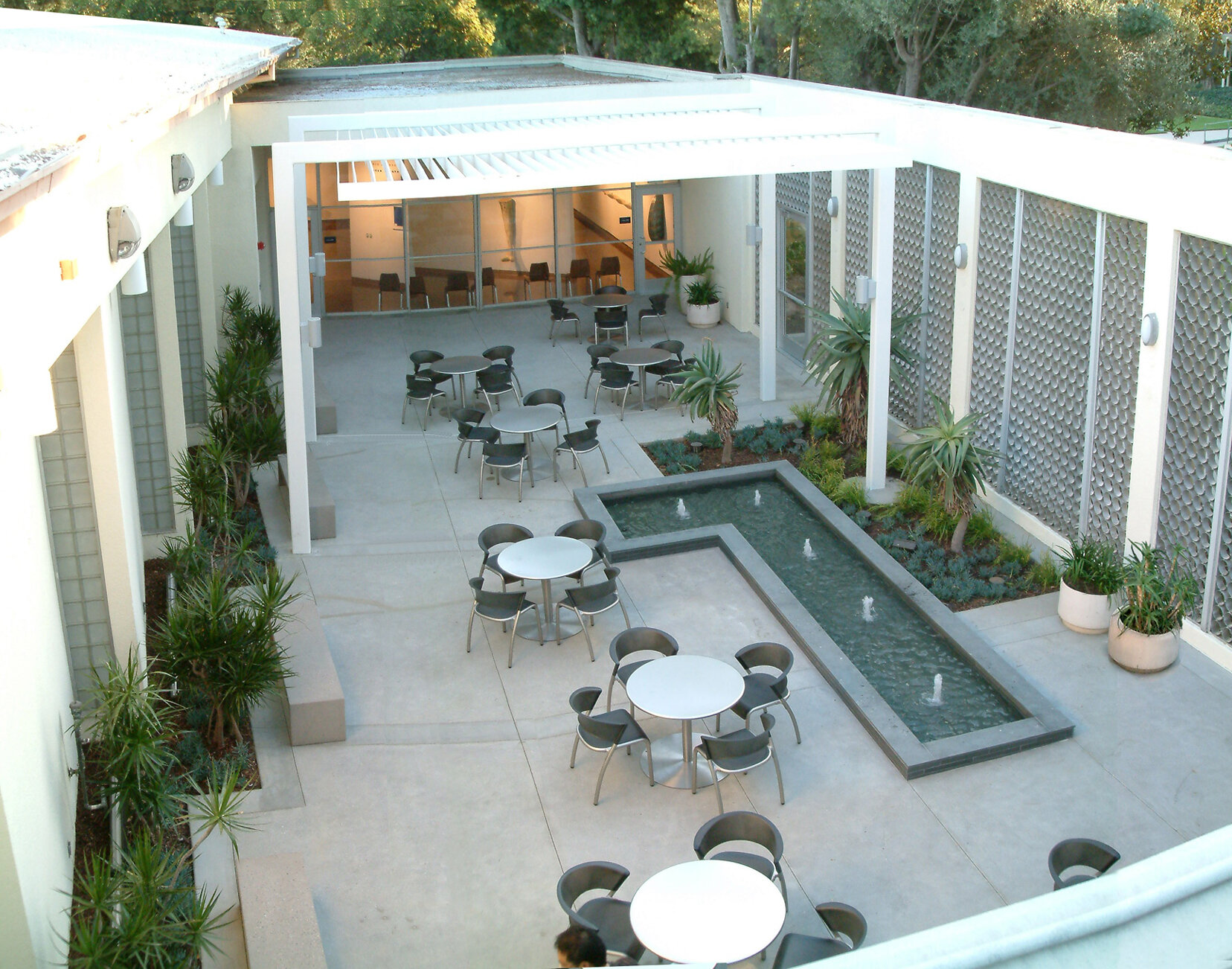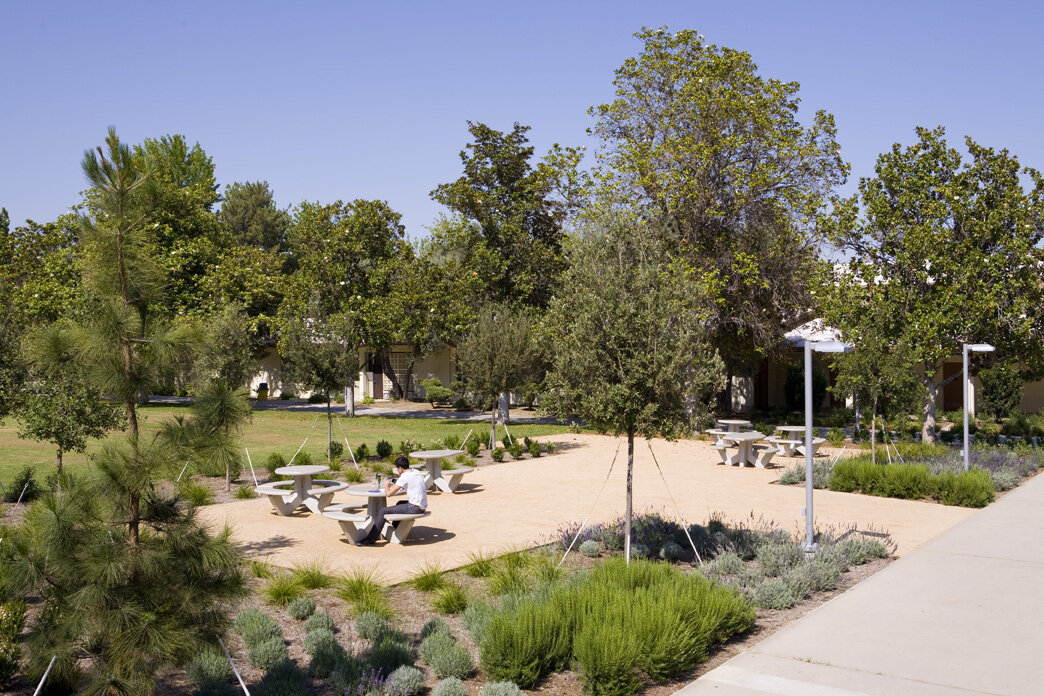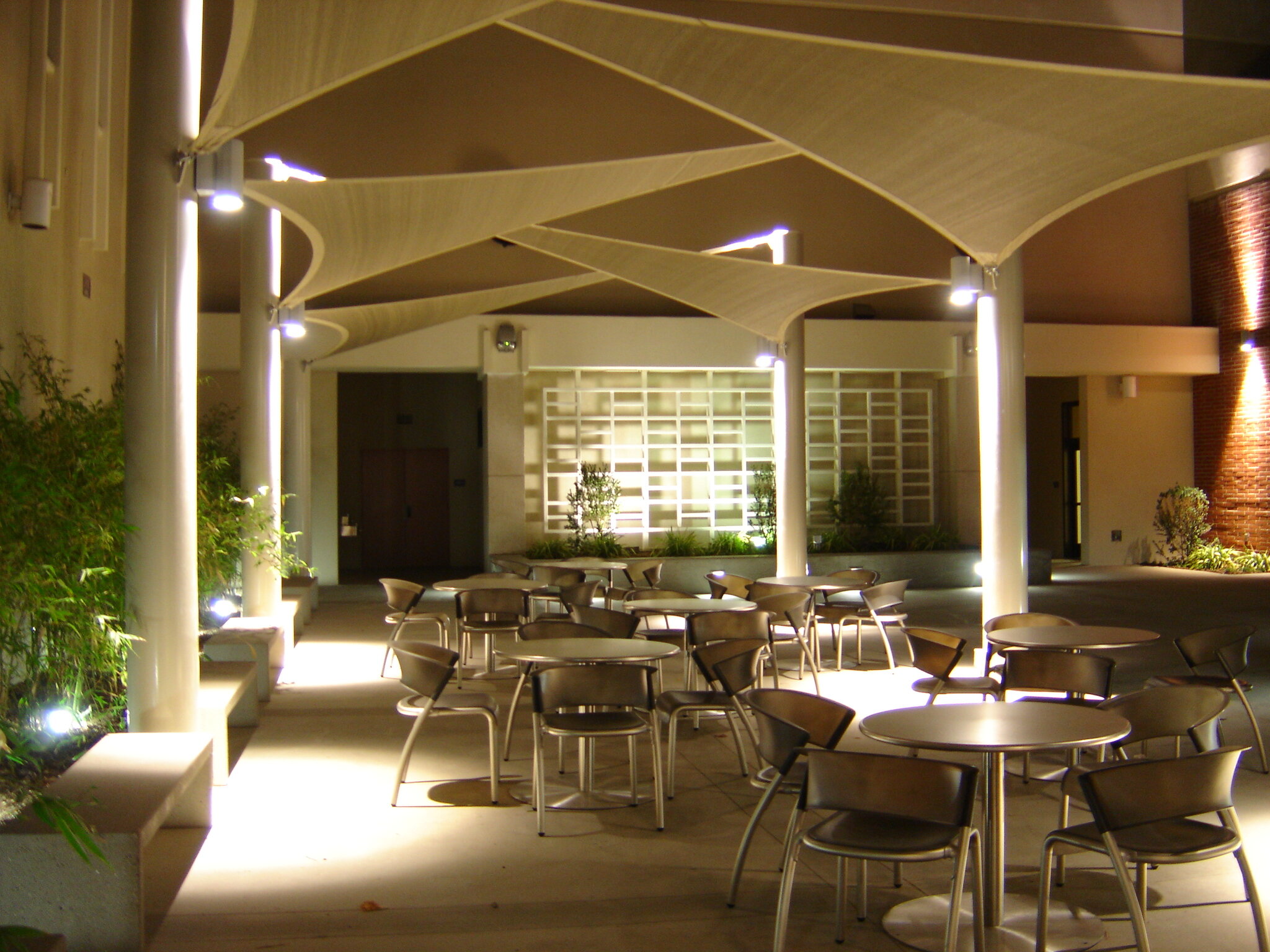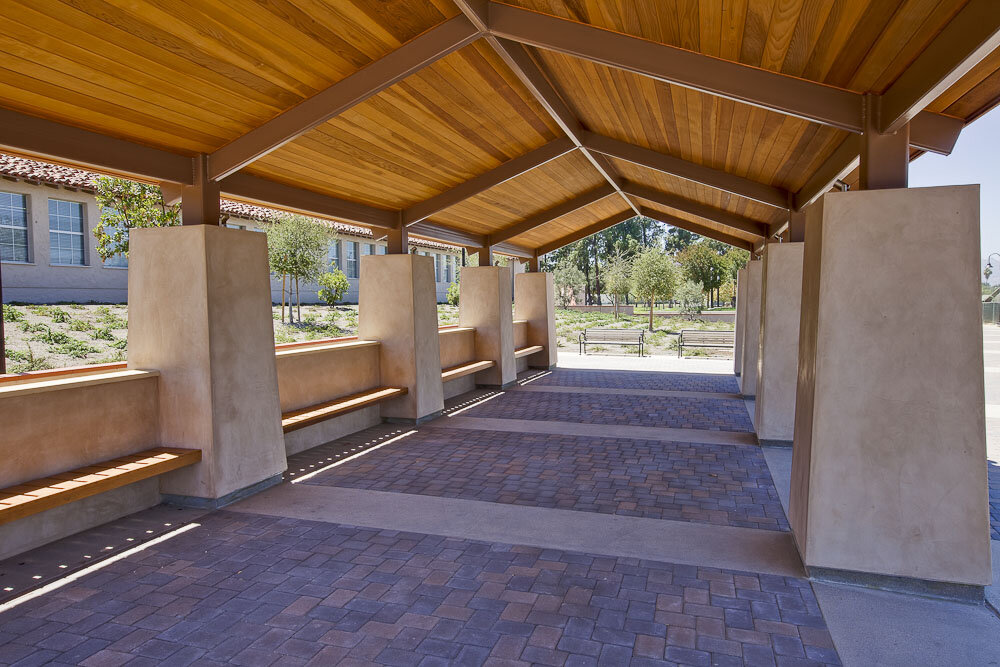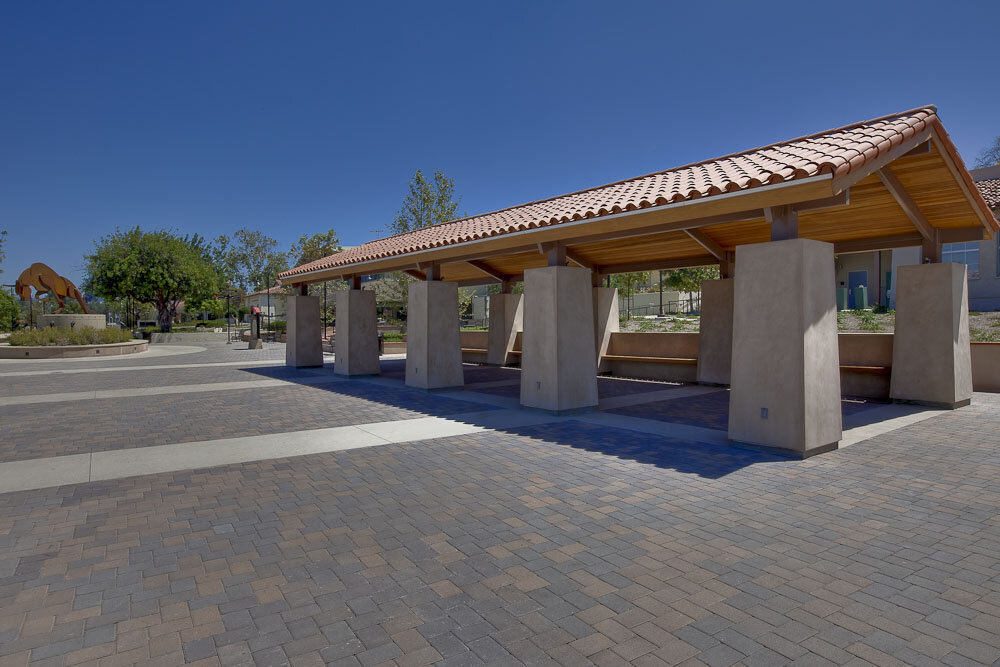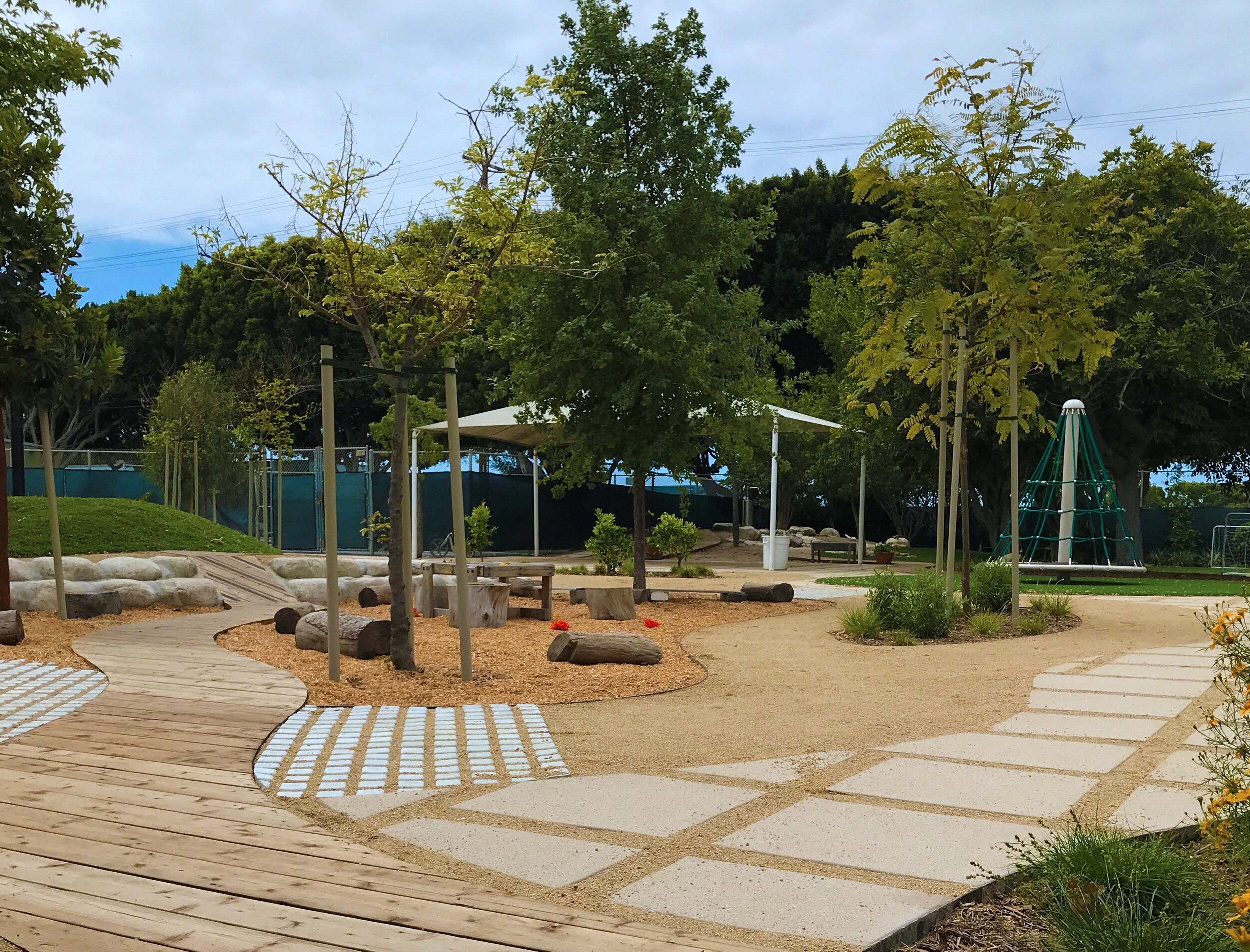As we began looking for additional learning spaces on campus we studied the idea of outdoor classrooms. Outdoor learning spaces are increasingly recognized as an important opportunity for students to thrive and retain more of what they are taught. And at this moment there is the added benefit that fresh air and daylight help slow the transmission of Covid-19 . How can schools re-imagine their outdoor spaces (sports fields, playgrounds, basketball courts) to increase their classroom count? Can overlooked minor spaces (such as alleys between buildings, decorative lawns) be re-purposed for learning spaces? And if schools have fewer visitors to campus at any one time and not having performances or large events, are there extra parking spots that can be converted to additional learning spaces? What do these spaces look like?
We wondered, are parking lots now oversized based on current social distancing and maximum gathering guidelines? Can the parking provided be lowered to what is needed and extra stalls be converted to shaded collaboration-style classrooms? Can Wi-Fi service be beefed up and serve these new outdoor learning spaces? What are some low cost, fast to implement ideas to create a variety of outdoor learning environments from these spaces? We would love to hear your thoughts!
We’ve designed many outdoor learning spaces, that have specific aspects that can help with this style of learning, below are some of our projects where we created outdoor classrooms.
Designed for younger kids, Growing Place Ocean Park, below, is a recently completed project that our office helped design that supports outdoor learning in a variety of ways, including sitting stones, a covered work area, foliage, rocks and dirt for digging and mud play, and log stools created from an old tree on the property that had to be removed for safety concerns. The entire play area is woven together with a variety of ground textures that allows for different kinds of play, defines the various spaces, and encourages curiosity.
Often we design schools that are in under-served neighborhoods with tight, irregular sites that don’t permit a lot of flexibility of usage. Could groups of students be coordinated to plan visits to local parks and community gardens reducing the number of students on campus? Can parent volunteers help facilitate these visits?
Some further Links


